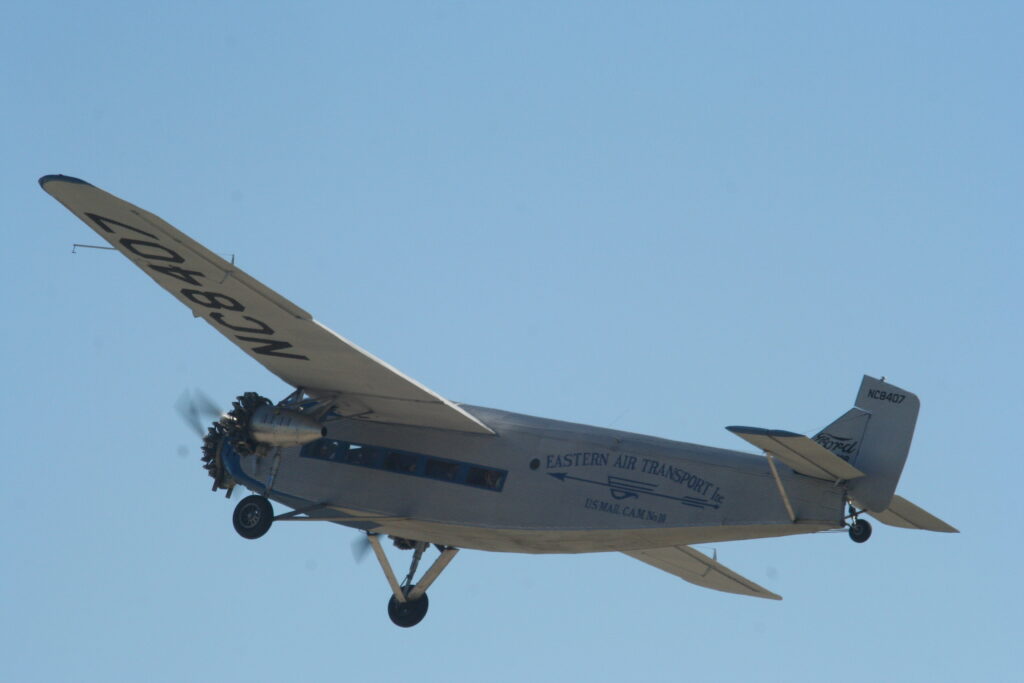Aviation history is filled with remarkable planes that paved the way for modern air travel, and vintage airliners have some of the most fascinating stories of all. These aircraft didn’t just get people from point A to B—they introduced new technologies, set records, and became symbols of their time. In this article, we’ll dive into 15 rare facts about these iconic airliners that helped shape the aviation world as we know it today.
Contents
First Commercial Flight in 1914

The world’s first scheduled commercial airline flight occurred in 1914, carrying a single passenger across Tampa Bay, Florida, in a Benoist XIV. Although a short 23-minute journey, this historic flight marked the beginning of commercial aviation and opened doors for larger, longer, and more sophisticated air travel. It demonstrated the potential for regular passenger services and laid the foundation for the global airline industry we know today.
The Ford Trimotor’s “Tin Goose” Legacy

Ford’s Trimotor, affectionately called the “Tin Goose,” was groundbreaking as one of the first aircraft designed with passenger comfort in mind. Its enclosed cabin with 15 seats made flights more comfortable and accessible, revolutionizing air travel during the 1920s and inspiring future designs. The Trimotor’s legacy lies in setting early standards for commercial airliners, paving the way for more sophisticated designs and luxurious accommodations.
The Boeing 247’s Game-Changing Speed

The Boeing 247 was a speed icon in the 1930s, capable of cruising at 155 mph—twice the speed of earlier airliners. Its sleek, streamlined design and innovative all-metal structure made it a pioneer of fast, efficient air travel. By significantly reducing travel times, the Boeing 247 influenced the development of faster and more powerful aircraft, helping to shape expectations for commercial air travel.
Douglas DC-3: The Plane That Changed Travel

The DC-3 was revolutionary for its efficiency, reliability, and cost-effectiveness, becoming the first airliner to turn a profit solely from passenger revenue. Its success spurred the widespread adoption of air travel and contributed to making flights accessible to the general public. The DC-3’s legacy endures as a reliable workhorse that defined commercial aviation for decades.
The Pressurized Cabin Pioneer: Boeing 307

The Boeing 307 Stratoliner was the first airliner equipped with a pressurized cabin, allowing it to soar above turbulent weather at 20,000 feet. This technological leap not only improved passenger comfort but also made longer, more reliable flights possible. The innovation of cabin pressurization set a new industry standard, leading to more advancements in high-altitude air travel.
The Short Empire Flying Boats’ Luxury Routes

The Short Empire Flying Boats were designed for long-distance luxury travel, connecting British territories across oceans. Equipped with sleeping berths and dining facilities, they were the epitome of airborne luxury in the 1930s. These flying boats offered a rare glimpse of what air travel could become and influenced the development of luxury in aviation.
Concorde’s First Supersonic Flight in 1969

Concorde’s 1969 maiden flight marked the dawn of supersonic passenger travel, with speeds reaching over Mach 2. This milestone changed the public’s perception of travel speed, shrinking travel times and opening the door to high-speed commercial aviation. Although Concorde’s service was short-lived, its legacy as a symbol of technological ambition remains unmatched.
The Lockheed Constellation’s Unique Dolphin Shape

The Lockheed Constellation, or “Connie,” was iconic for its unique curvy fuselage and triple-tail design, setting it apart visually from other airliners of its time. Renowned for its performance and aesthetics, the Constellation helped establish Lockheed as a premier aircraft manufacturer. Its design inspired the style and sophistication associated with early aviation’s golden age.
The Douglas DC-4’s Wartime Contributions

The DC-4 played a crucial role during WWII as a military transport aircraft and was later adapted for commercial use, helping standardize transoceanic flights. Its reliability and versatility made it popular among airlines, cementing its place as a foundational aircraft for post-war aviation. The DC-4’s adaptability demonstrated the potential for military aircraft to transition into civilian roles effectively.
The Junkers Ju 52’s Metal Skin Revolution

The Junkers Ju 52, with its distinctive corrugated metal skin, was famous for its durability and rugged construction. Used by both civilian and military operators, it symbolized German engineering and was known for handling diverse environments. Its construction techniques influenced aircraft design, making it a pioneer of reliable and versatile air travel.
The First Jet Airliner: de Havilland Comet

The de Havilland Comet was the world’s first commercial jet airliner, introducing high-speed travel. Though early models faced design flaws, the Comet paved the way for future jetliners and showcased the potential for efficient, fast air travel. The legacy of the Comet is its role as a pioneer of jet-powered commercial aviation.
The “Flying Hotel” of the Boeing 377 Stratocruiser

The Boeing 377 Stratocruiser offered unmatched luxury, with sleeping berths, lounges, and even cocktail bars. Known as the “Flying Hotel,” it set a standard for high-end passenger comfort during long flights. This level of comfort made it highly desirable for transoceanic flights, establishing a new level of opulence in air travel.
Vickers Viscount’s Turboprop Success

The British Vickers Viscount was the first successful turboprop airliner, combining the speed of jets with propeller-driven efficiency. Widely used through the 1950s and 1960s, it demonstrated how turboprops could be a viable option for commercial travel. Its success encouraged the aviation industry to consider alternative power sources for efficiency.
Pan Am’s Clippers Opened International Routes

The Pan Am Clippers, like the Martin M-130, were the first to offer transpacific flights, making international air travel a reality. These flying boats allowed passengers to travel between continents in record time, transforming global travel. The Clippers’ legacy is in pioneering the routes and infrastructure for international aviation.
Convair 880: The Fastest Subsonic Airliner

The Convair 880 was famed as the fastest subsonic airliner, with a cruising speed of 615 mph. This speed advantage made it attractive to airlines seeking quicker travel times. Though it faced competition from larger jets, its speed set a new benchmark for subsonic airliners.
This article originally appeared in MyCarMakesNoise
More from MyCarMakesNoise
15 Most Reliable Trucks for Heavy-Duty Work

15 of Toyota`s Most Collectible CarsWhen it comes to heavy-duty work, having a reliable truck is essential. The demands of towing, hauling, and navigating tough terrains require a vehicle that can withstand intense pressure and maintain peak performance. Whether you are in construction, agriculture, or any industry that requires heavy lifting, a dependable truck ensures you can get the job done efficiently and safely. Read More
15 of Toyota`s Most Collectible Cars

Toyota’s rich automotive history is filled with iconic models that have captivated enthusiasts and collectors alike. From groundbreaking sports cars to versatile off-road vehicles, Toyota has consistently pushed the boundaries of design and performance. This legacy of innovation and reliability has resulted in a diverse range of models that are highly sought after in the collector car market. Read More
10 Iconic Limited-Edition Aston Martin Cars You Need to Know

Aston Martin has a storied history of producing some of the most iconic and luxurious cars in the world. Among their most prized creations are the limited-edition models, which combine heritage, innovation, and exclusivity. Read More














